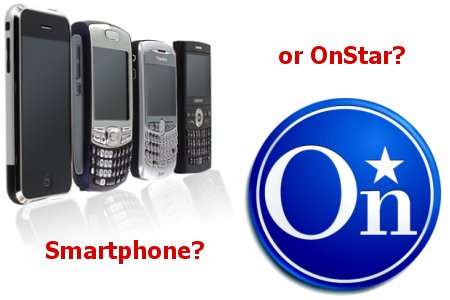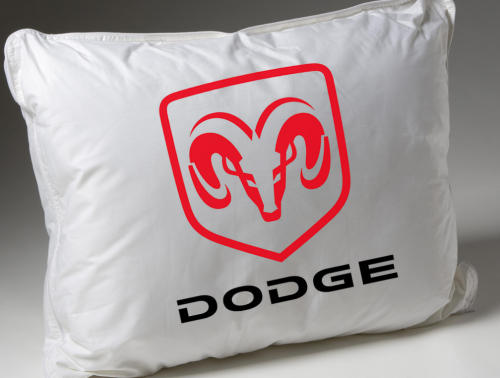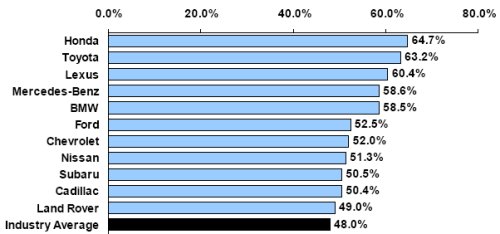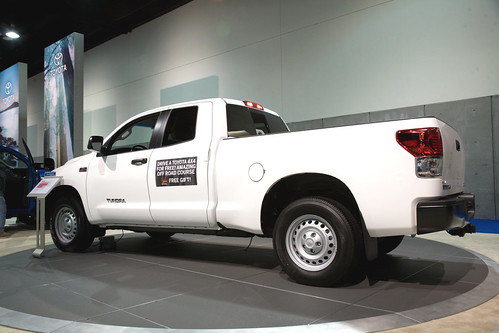 All Entries in the "Auto News" Category
All Entries in the "Auto News" Category
Smartphones Will Replace OnStar and Similar Systems
TundraHeadquarters.com says “Smart Phones Will Take Over the World, Muwahahahahah!”
Okay, maybe that is an exaggeration. Maybe the smart phone won’t take over the world, but it is likely that the smart phone will take over the automotive industry’s incessant desire to provide navigation and emergency communications technology.
Earlier this month Toyota Motor Corp. announced it will introduce a technology similar to GM’s OnStar for select Toyota models. As a special introductory offer, new car buyers will receive a one-year free subscription to the service.
While we agree that the navigation and emergency assistance that OnStar – and soon Toyota – provides is an excellent service, OnStar and the like aren’t necessary anymore with the advent of smartphones.

Toyota has announced the creation of a competitor to GM’s OnStar service, but why? Smartphones currently offer many of the benefits of OnStar, and it’s only a matter of time until smartphones replace OnStar completely.
Dodge Trucks Moving Towards Softer Image
In 2008, total combined sales for the Toyota Tundra and Toyota Tacoma surpassed the total combined sales of the Dodge Ram and Dodge Dakota. While uncertainty surrounding a Chrysler bankruptcy was certainly a factor in Dodge’s reduced sales last year, it’s hard to ignore the fact that Dodge trucks are falling in popularity. After all, Dodge announced a successful sales incentive this past summer (the $2.99 a gallon gas incentive we denounced as a rip-off – and we were right) as well as a new version of the Dodge Ram, and they still finished behind Toyota (a relative newcomer to the truck market).
Back in 1991, Dodge faced a very similar situation. The venerable Ram and Power Ram, which debuted in 1981, had fallen into last place in terms of truck sales, and the Chrysler corporation was at death’s door. Following a complete corporate overhaul, the new 1994 Dodge Ram appeared and became an instant success. Dodge capitalized on a very bold choice – introducing “semi-like” styling to a half-ton pickup. It was a masterstroke.
This weekend, auto blog Jalopnik.com published an article that stated Dodge is considering replacing the Dakota with a car-based light truck. This information only adds to our impression that Dodge is moving towards a soft and luxurious image. Instead of the power and performance image that was cultivated during the “That thang got a Hemi?” campaign, they’re going up-market. Here’s why:
J.D. Power Study Shows J.D. Power Not That Smart
J.D. Power recently released a study describing “new vehicle buyer retention rate” by brand. To put that in English, J.D. Power figured out how likely someone who bought a new [blank] is likely to buy another new [blank]. Here’s a nice graph that breaks it down:
J.D. Power’s “Owner Retention Rate by Brand” study results are hardly conclusive (or reasonable).
You’ll have to click on the picture to see all the brands with below-average buyer retention. Jaguar, with only 26.2%, is the lowest.
Toyota and Lexus placed highly, with 63.2% and 60.4% retention respectively. In other words, about 60% of the people buying new Toyota and Lexus vehicles currently own another Toyota or Lexus product. Honda finished just slightly above Toyota at 64.7% retention.
The problem, of course, is that retention has as much to do with brand selection as it does with brand satisfaction. Only brands that offer “one of everything” can get good results in a study like this.
Toyota Targets Fleet Sales With 2010 Tundra Work Truck
This past weekend, Toyota quietly announced their new 2010 Toyota Tundra Work Truck (covered very nicely by PickupTrucks.com). The new Tundra work truck option – which is basically a very cheap fleet version of the current “Tundra grade” – is designed to boost Tundra fleet sales, and it’s a worthy goal considering the current marketplace.
The 2010 Toyota Tundra Work Truck package is designed to capture fleet sales, but is that really a good idea?
Fleet sales, after all, aren’t very profitable…but they keep the factory humming. Toyota originally tried to build a “nice” fleet truck back in 2007, with features that most fleet buyers didn’t want to pay for (like remote keyless entry, cruise control, power mirros, etc.). Unfortunately, the “nice” fleet trucks were too expensive to compete and Toyota failed to capitalize on the fleet market. Now, pulling a page out of the domestic’s playbook, they’re going to go after the fleet market with a stripped-down ultra-cheap Tundra. But is this a good strategy for Toyota? Here’s how we break it down…
UAW Boss Claims F150 Built Faster Than Tundra – WRONG
UAW boss Ron Gettelfinger, in an op-ed piece for the Detroit News, recently made claims that union workers are faster than non-union workers. While we certainly can’t speak to that fact (nor would we make such a grand generalization about workers), it’s pretty clear to us that the following piece of information is completely, 100%, incorrect. Laughably so:
according to 2008 Harbour data, it takes UAW members in Kansas City just over 19 hours to assemble a Ford F-series pick-up. It takes more than 32 hours to assemble the Toyota Tundra, a similar vehicle, at a non-union plant in Princeton, Indiana
Gettelfinger used this little piece of fiction to help demonstrate a point that’s very important to the UAW – the union has given enough in terms of wage and benefit cuts. They don’t think they should have to give anymore.
Fair enough. Far be it for TundraHeadquarters.com to argue with Ron Gettelfinger about the sacrifices of the UAW.
However, when it comes to the “fact” that the F150 can be assembled in K.C. in about half the time a Tundra can be built in Princeton, Indiana, we have some facts of our own:




